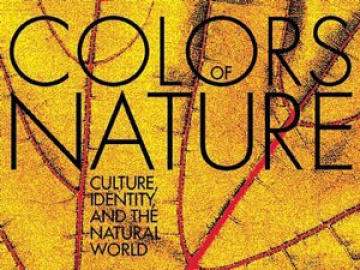
Alison Hawthorne Deming is a Professor in Creative Writing at the University of Arizona. In addition to co-editing the collection of essays reviewed here, she is the author of seven books, including Science and Other Poems (LSU Press, 1994), Genius Loci (Penguin, 2005), and Writing the Sacred into the Real (Milkweed, 2001). Deming has received many awards for her writing, including a Walt Whitman Award from the Academy of American Poets, a Pushcart Prize, two NEA fellowships, a Fine Arts Work Center fellowship, and a Wallace Stegner fellowship. You can visit with her, and with other College of Humanities faculty writers and editors, at the Tucson Festival of Books this year.
"Redefining Terms, Reclaiming Place," in which Oliver de la Paz reviews The Colors of Nature: Culture, Identity, and the Natural World, edited by Alison Hawthorne Deming and Lauret E. Savoy, appears in issue no.28 of Terrain.org: A Journal of the Built & Natural Environments.
Here's an excerpt of that review:
The Colors of Nature: Culture, Identity, and the Natural World is an anthology that doesn’t operate merely as a collection of essays and poems by writers of color and their reflections about the natural world. Rather, the anthology is a sophisticated argument expertly structured around the following question: “Why is there so little ‘nature writing’ by people of color?” Deming and Savoy carefully interrogate possible reasons for such a disparity:
What if one’s primary experience of land and place is not a place apart but rather indigenous? What if it is urban or indentured or exiled or (im)migrant or toxic? To define “nature writing” as anything that excludes these experiences does not reveal a “lack” of writing, but reflects, instead, a societal structure of inclusion and exclusion based on othered difference—whether by “race,” culture, class, or gender.
The question about how to define “natural writing” has traditionally neglected narratives by people of color because, perhaps, their narratives did not involve the type of idyllic discourse founders of the “natural writing” movement had intended. Deming and Savoy describe such writing as:
...solitary explorations of wild places from a poetic, philosophical, or scientific perspective; seeing nature as a place apart, where wisdom and inspiration could be harvested for day-to-day life in the “real” world of cities.
And indeed, there are only a few titles in libraries or bookstores filed under the term “nature writing,” as it’s traditionally defined, by writers of color. Deming and Savoy’s selections for the anthology endeavor to remedy this issue by re-examining the parameters of just what is “nature writing.”
Read the rest of this review here.
Terrain.org: A Journal of the Built & Natural Environments is a twice yearly online journal searching for that interface—the integration—among the built and natural environments, that might be called the soul of place.
Editor-in-Chief Simmons Bunton received his M.F.A. in Creative Writing from the University of Arizona. His latest book of poetry, Bloom, was published by Salmon Poetry in 2010.

